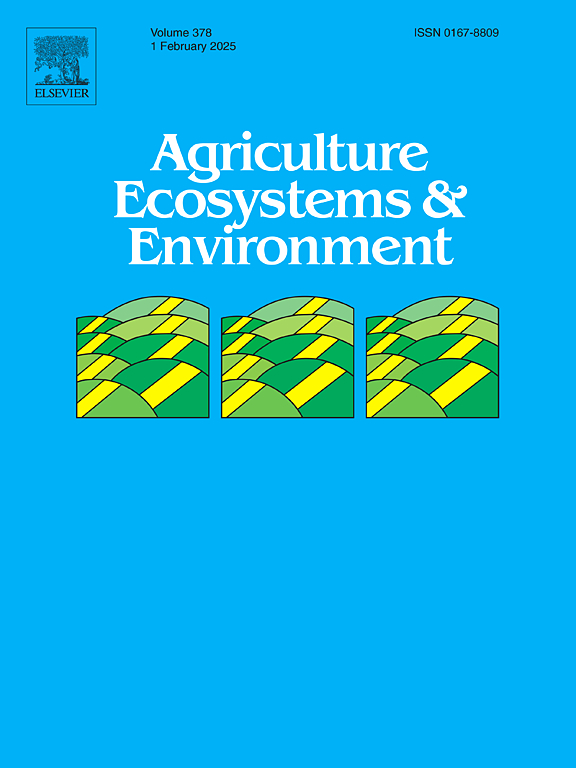Drought timing and degradation status determine the grassland sensitivity to simulated drought events
IF 6.4
1区 农林科学
Q1 AGRICULTURE, MULTIDISCIPLINARY
引用次数: 0
Abstract
The intensity and frequency of drought are constantly increasing, threatening the ecosystem functions of grasslands. Although drought can generally limit vegetation growth, the effect of drought timings and grassland degradation status remains unclear. We selected three grasslands with different levels of degradation (extremely, moderately and slightly degraded) in northern China and examined the effects of 30-day drought events during different timings (early, middle, and late growing seasons) on soil water content (SWC), vegetation coverages, and aboveground net primary productivity (ANPP). We found that by reducing SWC by approximately 22–75 %, drought events led to significant declines in seasonal vegetation coverage, but weaker effects on ANPP. Among different drought timings, vegetation coverages showed the minimum sensitivity to early-season droughts with positive legacy effects and the maximum sensitivity to mid-season droughts with negative legacy effects. Late season drought can lead to negative legacy effects on next spring, but positive legacy effects on next summer. Vegetation compositions in terms of the proportions of degradation indicator plants play an important role in regulating seasonal drought sensitivities in degraded grasslands. Our findings underscore that, to better understand the performance of grassland ecosystems during drought events, we must consider the impact of drought timing and grassland degradation status.
干旱时间和退化状况决定了草地对模拟干旱事件的敏感性
干旱的强度和频率不断增加,威胁着草原的生态系统功能。虽然干旱一般会限制植被的生长,但干旱时间和草地退化状况的影响仍不清楚。我们在中国北方选择了三块不同退化程度(极度退化、中度退化和轻度退化)的草地,考察了不同时间(生长季早期、中期和晚期)的 30 天干旱事件对土壤含水量(SWC)、植被覆盖度和地上净初级生产力(ANPP)的影响。我们发现,干旱事件使土壤含水量减少约 22-75%,从而导致季节性植被覆盖率显著下降,但对净初级生产力的影响较弱。在不同的干旱时间中,植被覆盖率对早季干旱的敏感度最低,但会产生积极的遗产效应,而对中季干旱的敏感度最高,但会产生消极的遗产效应。晚季干旱会对翌年春季产生负面影响,但对翌年夏季产生正面影响。从退化指标植物的比例来看,植被组成在调节退化草地的季节性干旱敏感性方面发挥着重要作用。我们的研究结果强调,为了更好地了解干旱事件期间草原生态系统的表现,我们必须考虑干旱时间和草原退化状况的影响。
本文章由计算机程序翻译,如有差异,请以英文原文为准。
求助全文
约1分钟内获得全文
求助全文
来源期刊

Agriculture, Ecosystems & Environment
环境科学-环境科学
CiteScore
11.70
自引率
9.10%
发文量
392
审稿时长
26 days
期刊介绍:
Agriculture, Ecosystems and Environment publishes scientific articles dealing with the interface between agroecosystems and the natural environment, specifically how agriculture influences the environment and how changes in that environment impact agroecosystems. Preference is given to papers from experimental and observational research at the field, system or landscape level, from studies that enhance our understanding of processes using data-based biophysical modelling, and papers that bridge scientific disciplines and integrate knowledge. All papers should be placed in an international or wide comparative context.
 求助内容:
求助内容: 应助结果提醒方式:
应助结果提醒方式:


